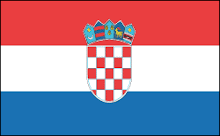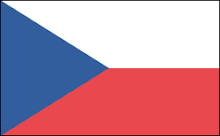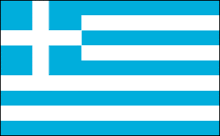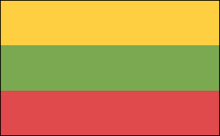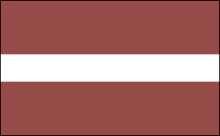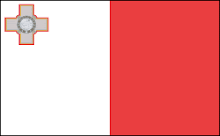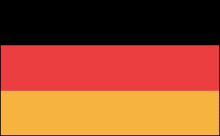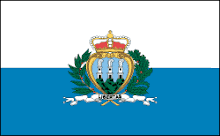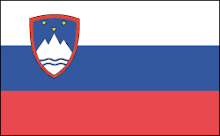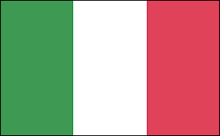PŁASKORZEŹBA ODDZIAŁY SPOD GRUNWALDU
-
ul. Celna 1\3
Spacerując po Starówce, warto zaglądać w podwórka. Spacerując Celną
(dawniej Gnojną), zza kraty dobrze widać płaskorzeźbę przedstawiającą
r...
środa, 29 lutego 2012
POLEJKI
Wyświetl większą mapę
Polejki to malutka wieś pod Olsztynem. Wieś pochodzi z XIV w. Dziś mieszka tu nieco ponad 30 osób w kilku domach. Część z nich, tych najstarszych, chyli się ku upadkowi. Nie dochodzi tu żaden autobus, czy pociąg - można się tu dostać tylko samochodem lub rowerem.
Polejki is a small village near Olsztyn. It was settled in the XIV century. There are about 30 people living here in a few houses. The oldest ones are about to fall apart. There's no bus or train coming here - you can only get here by car or bike.
poniedziałek, 27 lutego 2012
CHANIA
Wyświetl większą mapę
Chania to spore (ponad 57.000 mieszkańców) miasto na Krecie. Powstało już w IV w. pne jako Kydonia. W I w n.e. miasto zdobyli Rzymianie, a 1200 lat później Wenecjanie, którzy zmienili nazwę miasta na La Canea. W XVII w. miasto zostało zajęte wraz z całą wyspą przez Turków, którzy nieco później ustanowili Chanię stolicą wyspy. W 1898, kiedy Kreta zyskała niepodległość, właśnie Chania stała się stolicą państwa. W 1913 Kretę przyłączono do Grecji. Podczas II WŚ miasto zniszczyły naloty. Od 1971 stolicą wyspy jest Iraklion, a Chania to duże, portowe miasto z lotniskiem, choć przez wszystkie zawieruchy wojenne, straciło wiele ze swojego uroku.
Chania is a big (more than 57 000 inhabitants) city in Crete island. It has been already settled in the IV century BC as Kydonia. In the I BC The Romans conquered the city, and 1200 years later the Venetians, who changed the name of the town into La Canea. In the XVII century the city was occupied with the whole island by the Turks, who later established the island's capital in Chania. In 1898, when Crete gained its independence, Chania became the capital of the state. In 1913 they joined Crete to Greece. During World War II bombing destroyed the city. Since 1971, the capital of the island is in Heraklion and Chania is just a large port city with the airport, but by all the turmoil of war, it has lost much of its charm.
Starówka z XIII i XIV w. nie prezentuje się okazale. W zasadzie są to ruiny porozrzucane pomiędzy nowymi budynkami.
Old Town from the XIII-XIV c. is not pretty. Actually, there are only some ruins spreaded among some new houses.
Raczej rozczarowujące. Cała starówka legła w czasie II WŚ.
Rather disappointing. The whole old town was destroyed during the II WW.
Port wenecki z XVI w.
Venice Port from the XIV c.
Arsenały - obecnie zostało tylko 9 z 23
Arsenals - there are only 9 left out of 23 built.
Widok na port
A view on the port
Latarnia morska na molo
A lighthouse on a pier
Meczet Djamassi
Djamassi mosque
Muzeum Morskie
Maritime Museum
Centrum miasta
City centre
Katedra Mitropolis
Mitropolis cathedral
Miasto
The city
sobota, 25 lutego 2012
TARNÓW
Wyświetl większą mapę
Tarnów to duże miasto (116.000 mieszkańców) na południu Polski. W XII w. założono tu wieś Tarnów Mały na miejscu dawnego grodu. Prawa miejskie Tarnów otrzymał w 1330. Powstał tu zamek dla Leliwitów, a miasto należało kolejno do Tarnowskich, Ostrogskich, Zasławskich i Sanguszków.W XVII w. Tarnów znalazł się w granicach Księstwa Galicji i Lodomerii, dzięki czemu Tarnów usamodzielnił się od Krakowa, a miasto zaczęło rozwijać się dzięki linii kolejowej. Było to pierwsze polskie miasto, które uzyskało niepodległość w 1918. W czasie II WŚ 45% ludności zginęła, ponieważ mieszkało tu wielu Żydów. Dziś to piękne miasto z uroczą starówką.
Tarnow is a big city (116.000 inhabitants) in the southern Poland. In the XII century, it was founded here as a small village of Tarnów in the site of the old town. Tarnow received city rights in 1330. A castle was built here for Leliwita, and the city was owned by Tarnowski, Ostrogski Zasławskich and Sanguszka families. In the XVII century Tarnów became part of the Principality of Galicia and Lodomeria so it became independent from Krakow, the city began to develop due to a railway line. This was the first Polish city, which gained independence in 1918. During the Second World War there was 45% of the population killed, since many Jews lived there. Today it is a beautiful city with a charming old town.
Town Hall from XIV c.
Bazylika NMP z XIV w. Wewnątrz są groby właścicieli miasta i uważany za najpiękniejszy w Europie posąg kobiety, przedstawiający Barbarę Tarnowską.
Basilica of St. Mary from the XIV c. Inside, there are the graves of the city owners and a statue of Barbara Tarnowska, which is considered the most beautiful woman's sculpture in Europe.
XIXwieczne kamienice z muzeum
Houses from the XIX century with a museum
Bima - jedyna pozostałość po synagodze z XVII w.
Bimah - the only remain after the synagogue from the XVII c.
Drzwi bazyliki
Basilica door
Pomnik gen. Józefa Bema
General Josif Bem monument
Budynek dawnej Kasy Oszczędności z 1880-2 z reprezentacyjną salą Lustrzaną na ul. Wałowej
A building of Savings Bank from 1880-2 with representative Mirror Hall in Wałowa Street.
Stara mykwa z 1904
Old Jewish bath from 1904
Kościół NMP z XV w.
St. Mary church from the XV c.
Na zabytkowym cmentarzu
At the old cemetary
Subskrybuj:
Posty (Atom)



















































































